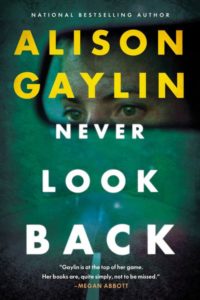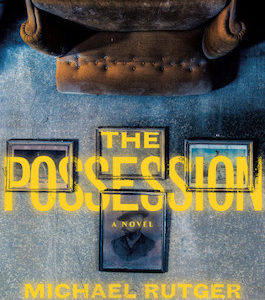I was born at the tail end of the baby boom, a few months after the Beach Boys recorded “Wendy,” a couple of days before LBJ defeated Goldwater, and mere weeks before my future-favorite-author-who-never-existed, the pseudonymous Carolyn Keene, published the forty-second Nancy Drew Mystery, The Phantom of Pine Hill.
A decade later, I devoured that book. Haunted mansion with a secret passage? Check. Vintage wedding gown and century-old sunken treasure? Check. Masked villains, gangsters and goons outwitted by Nancy and her BFFs? Triple badass chick check.
Though few other titles fell so squarely into my favorite history-meets-mystery genre, I racked up a wide row of yellow-spined Nancy Drew hardbacks on my bedroom bookshelf, alongside various sleuth series and sweeping novels by nineteenth century writers. Smitten with bygone eras, I’d often climb into the lilac trees alongside our Queen Ann Victorian with my Holly Hobby bathrobe sleeves tied around my waist to simulate a long dress, sit “side saddle” on a horse/branch with a library book, and lose myself in the 1800s.
Trapped in a world of bell bottoms and Bonne Bell, Bubbleyum and the Brady Bunch, I was a trendy “Wendy” who longed to have been a vintage “Charlotte” or “Louisa.” Why couldn’t I have been born at least a century sooner and witnessed history? Somehow, I failed to grasp that I was doing so; that those mod and groovy dayglo days would eventually fall away and become the distant, and thus fascinating past. History.
I’ve since written crime novels that fall into my favorite history-meets-mystery genre, but when I set out to write Little Girl Lost, I didn’t necessarily consider it “historical” until I found myself buried in research to recapture 1968 and 1987 with meticulous authenticity. That book joined the growing ranks of recent crime fiction set in the mid-to-late twentieth-century. Here’s a half-dozen titles to add to your TBR stack, accompanied by the authors’ insight into researching the not-so-distant past to meld historical fact with suspenseful fiction.

November Road, by Lou Berney
Era: 1960s
Released to resounding critical praise, the Edgar-winning Berney’s page-turner isn’t just set in Dallas against a JFK-assassination backdrop, but revolves around a plausible re-imagining of the murder and a man who knows too much about it. Running cross-country for his life, he crosses paths with a young Oklahoma mother who isn’t running for hers—yet—despite having impulsively left her hardly-heroic husband. She and her young daughters provide the perfect, unwitting cover for a desperate fugitive dogged by shadowy villains who will stop at nothing to eliminate the only living witness.
Berney says, “I wanted to get the voice of the time period right, the words and the rhythms, so I went on eBay and bought entire full-year runs of old magazines from 1963, everything from Good Housekeeping to Playboy. I read everything, but the ads and the letters to the editor were an especially great resource.”

The Silver Gun, by L.A. Chandler
Era: 1930s
Depression-era New York City and its mayor, Fiorello La Guardia, come alive in the Agatha-Award-Nominated Chandler’s “Art Deco Mysteries,” featuring amateur detective Lane Sanders. Her busy days play out in the Tammany Hall-plagued mayor’s office while her nights are haunted by troubling memories of a childhood tragedy. When Lane’s life is threatened by gangsters, a staggering coincidence leads her to investigate a deadly criminal conspiracy with ties to a long-buried secret in her own past.
Sharing her hands-on speakeasy outings, Chandler notes, “With fedoras and suspenders and Mary Jane shoes everywhere you looked, holding a Flora Dora cocktail, and listening to Cole Porter…I half expected my characters Lane and Finn to walk around the corner. My characters…often dance at The Savoy which was the first dance hall that began as intentionally integrated. With a four thousand person capacity and two stages, it was sold out almost every night of the week. It didn’t matter if you were black or white, uptown or downtown, Brooklyn or Queens. All that mattered was if you could dance. Art has always transcended obstacles and divisions, but when I discovered these things even in the thirties, it gave me hope that art can still bring people together today.”

Never Look Back, by Alison Gaylin
Era: 1970s
In the Edgar-Award winning Gaylin’s latest release, a modern-day Dirty John-esque true crime podcaster drags an unwitting website columnist into a murky corner of her own past when he delves into a notorious seventies murder spree that shattered his childhood. Everyone knows that the teenaged killers died decades ago…or did they? A brutal home invasion results in another family tragedy and the twisty plot opens the door to unsettling questions about whether we can ever truly know—and fully trust—our loved ones.
“Even though I was very much alive and living in Southern California in 1976, I did find myself having to look up a lot of things April thinks about and talks about,” Gaylin says. “When ‘Starsky and Hutch’ was on the air comes to mind, when ‘Oh What a Night’ by Frankie Valli and the Four Seasons came out, what types of issues a ninth grader might be writing about for a social studies class… You don’t remember things as well as you think you do, so Google definitely comes in handy.”

Lady in the Lake, by Laura Lippman
Era: 1960s
A vividly gritty mid-sixties Baltimore comes alive in this month’s release from the Edgar-winning, New York Times bestselling Lippman. When a budding middle-aged feminist trades domestic drudgery for investigative journalism, she becomes obsessed with the young African American woman at the center of a murder case even the cops don’t care much about solving. The former privileged housewife is determined to give a voice to the marginalized victim, and hears it loud and clear as, unraveling an unsettling crime, she comes to terms with the life she left behind and the one she longs to create.
“I read a lot of newspapers and magazines from 1966, but I focused on the ads, the features, the recipes,” says Lippman. “My hunch is that ads are more helpful than actual news because they tell us what a generation yearned for and aspired to. It was helpful to know that 1966 was a year in which there was increasing violence in American cities. Yet it was more relevant, somehow, to read Craig Claiborne’s recipes in the New York Times. My main character might have glossed over the violence affecting the inner city. But she would have made Claiborne’s steak sandwiches.”

A Stone’s Throw, by James Ziskin
Era: 1960s
A Stone’s Throw (2019 Anthony and Lefty Award finalist), is the sixth installment in the Ellie Stone mystery series, all of which are set in the sixties. In the latest entry, it’s August 1962, and a small-town newspaper is on the trail of a double murderer in the horse racing Mecca of Saratoga Springs, NY amid the Travers Stakes, the annual Thoroughbred Season showcase event. Investigating a fatal stud farm arson case, Ellie follows rumors of thrown races and an unscrupulous jockey with mob ties, culminating in a final twist rivaling that year’s real life Travers photo finish.
“I rely on small, everyday details to create a sense of time,” says Zifkin. “Those everyday items, services, and cultural phenomena that defined an earlier era. Think of telephone operators and party lines, full-service gas stations, bread boxes, Greenstamps, the March of Dimes, the John Birch Society, the PTA, mercurochrome, rabbit ears, cigarettes everywhere, shortwave radios, etc. All of these conjure feelings and memories of an earlier time, one on the cusp of social, cultural, and technological revolutions.”
***


















